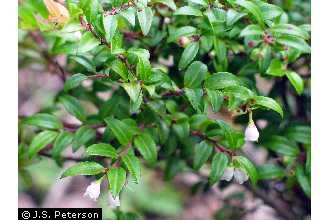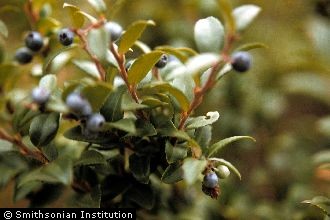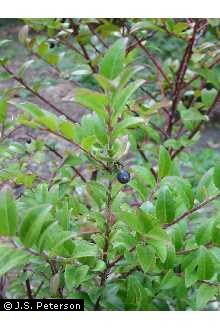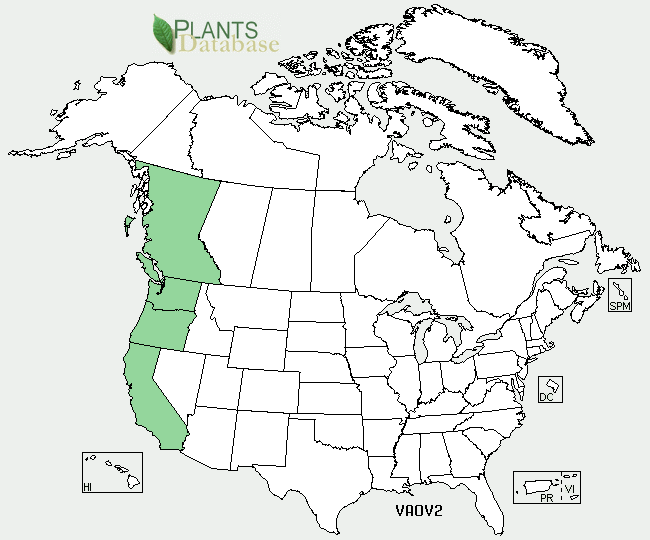Flowering and Fruiting - Pacific silver fir is monoecious; self-fertilization is possible because times of pollen dispersal and seed cone receptivity overlap on the same tree. When receptive to pollination, the seed cones appear purple, erect, and 8 to 16 cm tall on the upper surfaces of 1-year-old branches in the upper parts of tree crowns. Just before pollination, the pollen cones appear red, pendent, and usually abundant on the lower surfaces of the branches somewhat lower on the crowns than the seed cones. Seeds are fully mature in late August, and dissemination begins in mid-September- one of the earliest dispersal times for Pacific Northwest conifers.
Seed Production and Dissemination - California huckleberry, a cluster-fruited Vaccinium, can produce10 to 20 times more fruit than single-fruited huckleberries of similar size. Fruit is typically produced in great abundance whenever conditions are favorable. Seeds of most Vaccinium spp. are not dormant and require no pretreatment for germination . Seedlings first emerge in approximately 1 month and continue to emerge for long periods of time in the absence of cold stratification. However, seedlings of most western huckleberries are rarely observed in the field. Seeds of California huckleberry usually exhibit fairly good germination under laboratory conditions, but early growth is generally very slow. Berries are widely dispersed by birds and mammals.
Vegetative Reproduction - Sprouting has been well-documented in California huckleberry, but specific details are lacking. Most species of Vaccinium regenerate from basal sprouts or underground regenerative structures such as roots or rhizomes. Root or rhizome sprouting is probable in the California huckleberry. It reportedly possesses a well-developed root crownand sprouts from this structure after aboveground vegetation is damaged.



